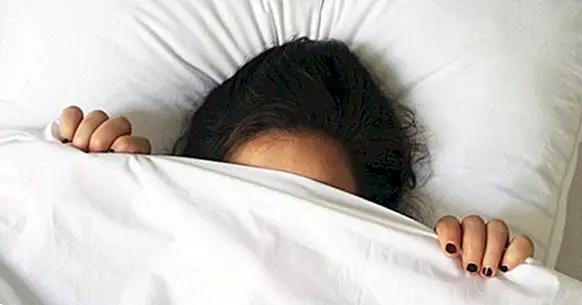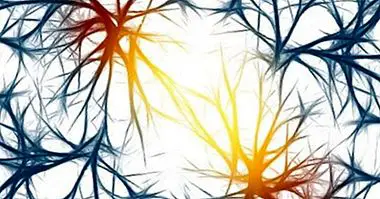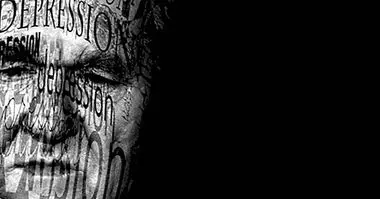Clinofilia (not getting out of bed): characteristics of the symptom and treatment
When we are sad and tired, as for example when we take a disappointment in love or when we are dismissed from a job, make the least effort can become a world. You may not want to do anything and even that the only thing we do in the first moments is to lie on the bed, sleep or not, thinking or just letting time pass.
Usually it is something occasional, but sometimes this type of attitude is much more frequent than usual and even becomes a trend. This tendency, typical of situations of high emotional distress and even medical or psychiatric disorders such as depression has a specific name: we are talking about clinofilia .
- Related article: "Chronic fatigue syndrome: symptoms, causes and treatment"
The clinofilia: what is it?
It is understood as clinofilia to the excessive tendency on the part of a subject to remain bedridden or lying down , often without desire or strength to perform another activity beyond staying in that position. This permanence is not justified by the presence of an organic cause: that is, the subject is not bedridden because he can not biologically speak of getting up from it. Thus, behind it there is usually some type of psychological disturbance or discomfort, with frequent association with suffering.
The clinofilia is not a disorder in itself, but rather a behavioral manifestation that could be indicating the presence of one: that is, we are before symptom of the existence of a problem . It is usually associated with emotional discomfort that you do not know how to avoid.
symptom
In this sense and to a large extent, we can consider that clinophylism is associated with the sensation of learned helplessness: the continued exposure to a situation to which we have not found an exit leads us to consider that our resources are not sufficient to face the situation aversive, inhibiting our performance and acquiring a position of passivity in this regard.
To remain lying down or lying down prevents us from finding the cause of our pain and allows us to be in a controlled and relatively safe place, in such a way that prevents exposure to the direct cause of discomfort . But on the other hand, it prevents solving it, which in the long run usually generates even greater discomfort.
Although the clinofilia itself is only this tendency to remain virtually motionless and passive in bed, often accompanied by apathy, sadness, mental or physical fatigue, irritability and difficulties in finding beauty and pleasure in the day to day.
Crying may appear depending on the case , as well as it is possible that it appears a lack of sensitivity and emotion, as emotional anesthesia. It is not uncommon that hypersomnia also appears due to lack of activity, and / or that it is accompanied by nocturnal insomnia with lack of restful sleep.
At the level of consequences, in addition to enhancing the above, it is common to generate in those who manifest a certain sense of guilt for lack of action and a decrease in self-esteem.
At a social level, labor problems may occur (for example, unpunctuality or absenteeism), and at a social level can also generate conflicts with the environment (such as the couple or people who cohabit with the subject) and even isolation (both by the lack of desire on the part of the subject to relate as for a possible rejection of this attitude).
- You may be interested: "Are there several types of depression?"
Causes and problems in which it usually appears
The clinofilia is a passive attitude that usually occurs as a reaction to a stressful, traumatic or painful for the subject. This behavior it does not have to be derived from the condition of a psychiatric disorder , but may appear by the experience of phenomena such as those written in the introduction, the death of a loved one (may appear in a grieving process), problems of a couple or even for the mere lack of vital objectives and self-realization.
In any of the cases, what is usually based is a high level of suffering and emotional discomfort that removes the energies of the subject.
With regard to their appearance in mental disorders, the disorders most linked to clinofilia are major depression and other depressive disorders, anxiety problems, bipolar disorder (in depressive phases) and psychosocial stress continued over time.
It is also possible its appearance after experiencing trauma or in post-traumatic stress disorder (although in this case there is also hypervigilance and restlessness, with which the permanence in the bed is restless and tense), and in personality disorders such as the depressive or the limit.
Another possibility with which it may appear associated is abulia and praise existing in patients with cognitive impairment, as in psychotic patients with negative symptoms.
However, it must be taken into account that clinofilia can be as much a symptom of a disorder as of a response to the diagnosis, course, prognosis or difficulties generated by it (that is, it is not the disorder that generates it but a reaction to some aspect of it). Likewise, it can also be a reaction to the diagnosis of medical diseases such as cancer, HIV-AIDS, diabetes or heart disease.
Treatment of this behavioral symptom
Treating clinofilia can be much more complicated than it seems. While the treatments may seem relatively simple, you have to take into account the great suffering and discomfort that generates that the patient is in that state , understand it and give an answer. Likewise, it must be borne in mind that in order to attend the consultation the patient (or their environment) has had to overcome their resistance to the action, something that must be assessed and reinforced.
The first step would be to discover the reason why the person with clinofilia maintains this behavior, what he considers to be his cause, his emotions and thoughts regarding his lack of action and the interpretation he makes of it (as well as the functionality that can be found in her). Likewise, it has to be assessed if there are disorders such as major depression or bipolarity to make an adequate treatment (remember that clinofilia is a symptom of something, whether or not a mental disorder, and not a disorder itself).
Once this is done, the fundamental step is to favor the activation of the subject. Establishing psychoeducational guidelines is useful , as well as pleasant activities programs or small steps (more or less graduated according to the problem, if a dramatic change is required, the patient probably will not accept it) that the subject is obliged to do. For example take out the trash or take a walk around the block. Favoring an activation contrary to the emotional discomfort little by little the subject will show some behavioral improvement, but this should not be the only thing that takes place.
And it is also necessary to carry out a work regarding the causes of their discomfort. An example in this sense can be found in Beck's cognitive therapy or in the cognitive restructuring of the beliefs and biases that the patient has . Work on self-esteem and self-concept is also necessary.
An important step is to favor the progressive empowerment of the person. For this, they can try to remember similar moments that the subject has successfully overcome, explore their attitudes, actions and the consequences they had and analyze their applicability to the current case. Also favor the presence of activities in which the subject presents certain domain and expertise , in such a way that you see yourself as valid and capable.
Training in stress management can help to become aware of different ways of coping with difficulties, just as expressive therapies can help to overcome the internalized discomfort of the person who suffers. In cases where there are sleep problems, it will also require proper treatment in this regard, as well as sleep hygiene.



















